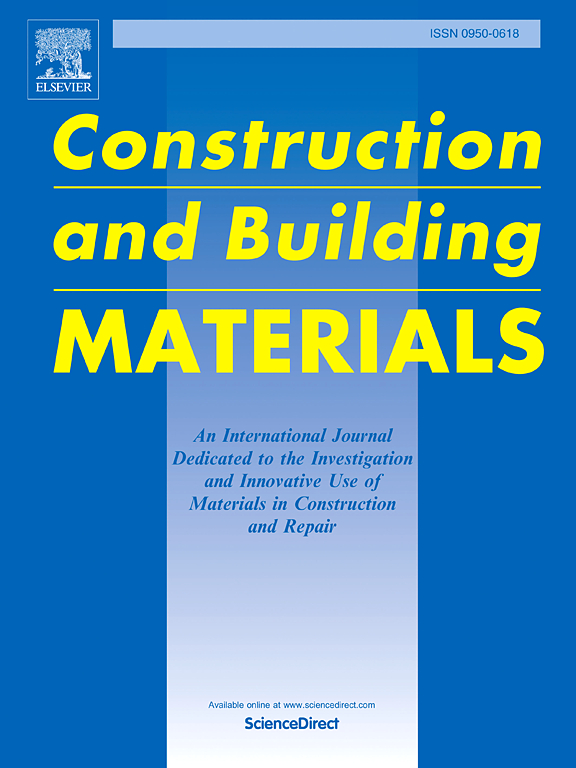探索微波活化作为活化煤矸石的新方法:关注微波活化机理和水泥基辅助材料的水化特性
IF 7.4
1区 工程技术
Q1 CONSTRUCTION & BUILDING TECHNOLOGY
引用次数: 0
摘要
为支持水泥工业的脱碳进程,煤矸石(CG)有望成为一种补充胶凝材料。煅烧过程会对粘土矿物的相变和煤矸石的胶凝活性产生重大影响。本研究采用微波和热活化两种方法在 600 ℃ 和 800 ℃ 下煅烧煤矸石。采用 XRD、XPS、傅立叶变换红外光谱、TG 和扫描电镜,研究煅烧机制对高岭土晶体结构、元素结合能、化学键、微观结构和矿物组成的影响。结果表明,CG 中的高岭石在 600 ℃ 左右完成了向偏高岭土的转化。微波活化增加了 CG 中活性铝酸盐的含量,提高了水胶结活性,促进了与水泥的二次水化。这一过程产生了额外的 C-(A)-S-H 凝胶和 AFm 相,填充了基体孔隙,增加了体系密度,改善了力学性能。CG 的最佳活化方法是在 600 °C 下进行微波活化。本文章由计算机程序翻译,如有差异,请以英文原文为准。
Exploring microwave activation as a novel method for activating coal gangue: Focus on microwave activation mechanisms and hydration characteristics of cementitious supplementary materials
To support the decarbonization of the cement industry, coal gangue (CG) has potential as a supplementary cementitious material. The calcination process significantly impacts the phase transformation of clay minerals and the pozzolanic activity of CG. This study involved calcination of CG at 600 ℃ and 800 ℃ using both microwave and thermal activation methods. Employ XRD, XPS, FTIR, TG, and SEM to examine the impact of calcination mechanism on the crystal structure, element binding energy, chemical bonds, microstructure, and mineral composition of CG. The results indicate that the transformation of kaolinite in CG to metakaolin is completed around 600 °C. Microwave activation increased the reactive aluminate content in CG, enhancing pozzolanic activity and promoting secondary hydration with cement. This process generated additional C-(A)-S-H gels and AFm phases, which filled matrix pores, increased system density, and improved mechanical properties. The optimal activation method for CG was identified as microwave activation at 600 °C.
求助全文
通过发布文献求助,成功后即可免费获取论文全文。
去求助
来源期刊

Construction and Building Materials
工程技术-材料科学:综合
CiteScore
13.80
自引率
21.60%
发文量
3632
审稿时长
82 days
期刊介绍:
Construction and Building Materials offers an international platform for sharing innovative and original research and development in the realm of construction and building materials, along with their practical applications in new projects and repair practices. The journal publishes a diverse array of pioneering research and application papers, detailing laboratory investigations and, to a limited extent, numerical analyses or reports on full-scale projects. Multi-part papers are discouraged.
Additionally, Construction and Building Materials features comprehensive case studies and insightful review articles that contribute to new insights in the field. Our focus is on papers related to construction materials, excluding those on structural engineering, geotechnics, and unbound highway layers. Covered materials and technologies encompass cement, concrete reinforcement, bricks and mortars, additives, corrosion technology, ceramics, timber, steel, polymers, glass fibers, recycled materials, bamboo, rammed earth, non-conventional building materials, bituminous materials, and applications in railway materials.
 求助内容:
求助内容: 应助结果提醒方式:
应助结果提醒方式:


